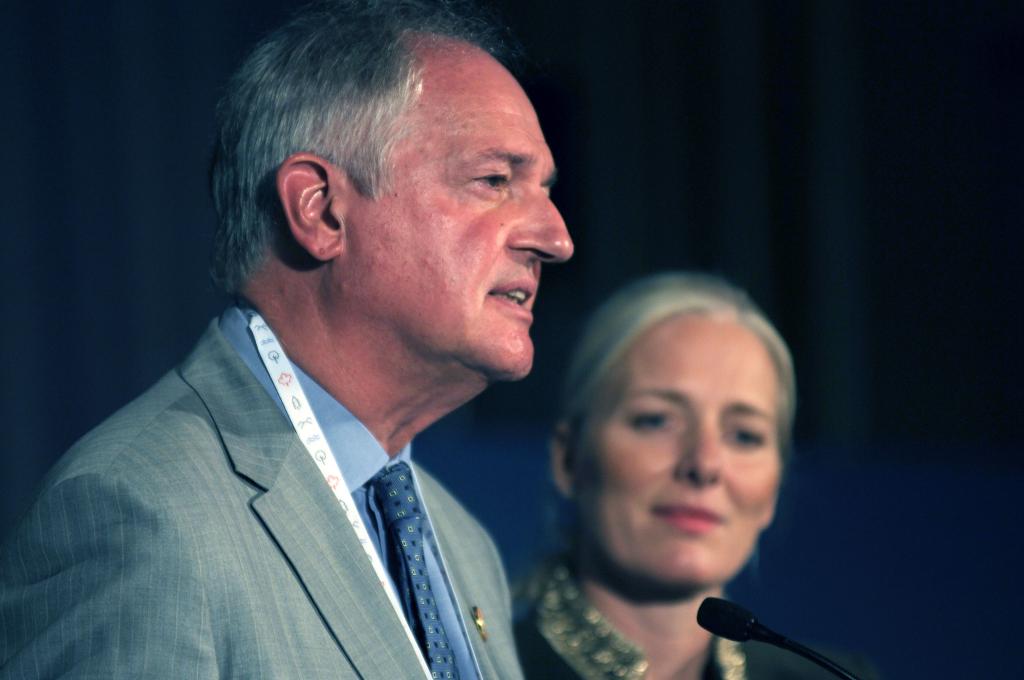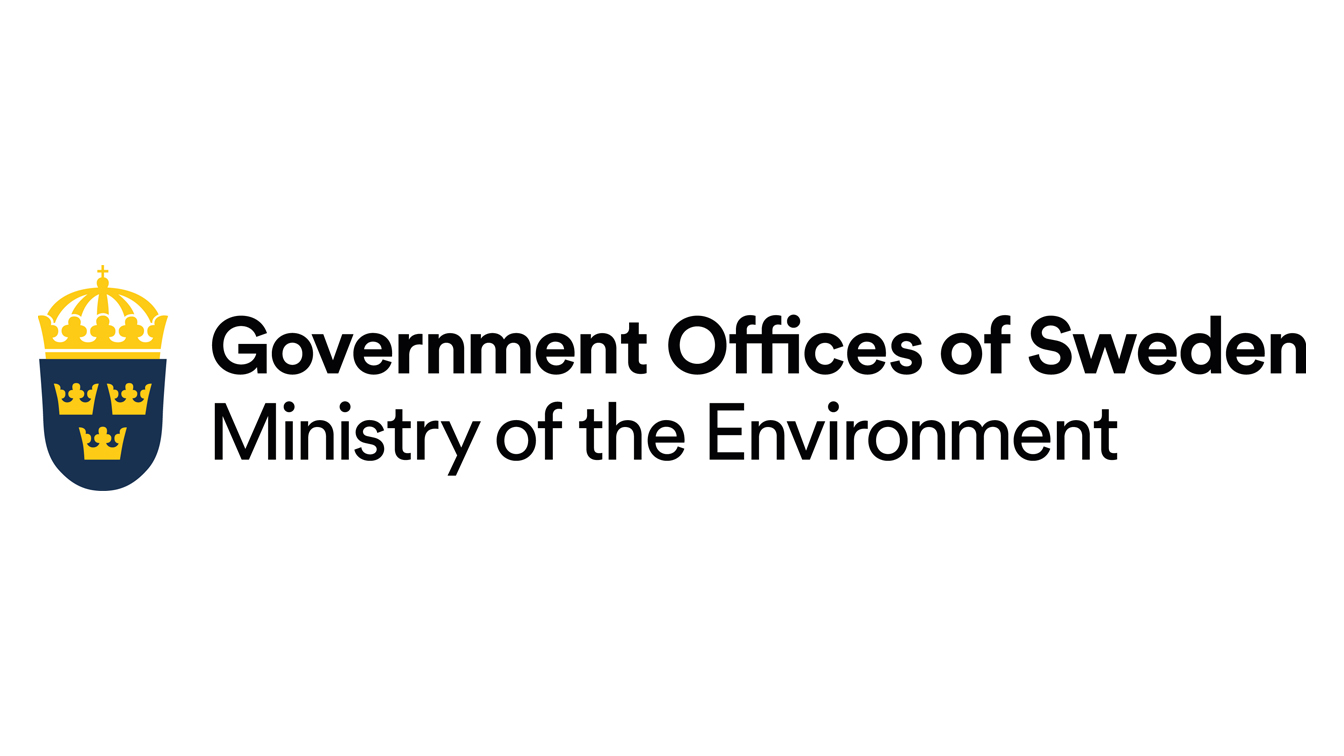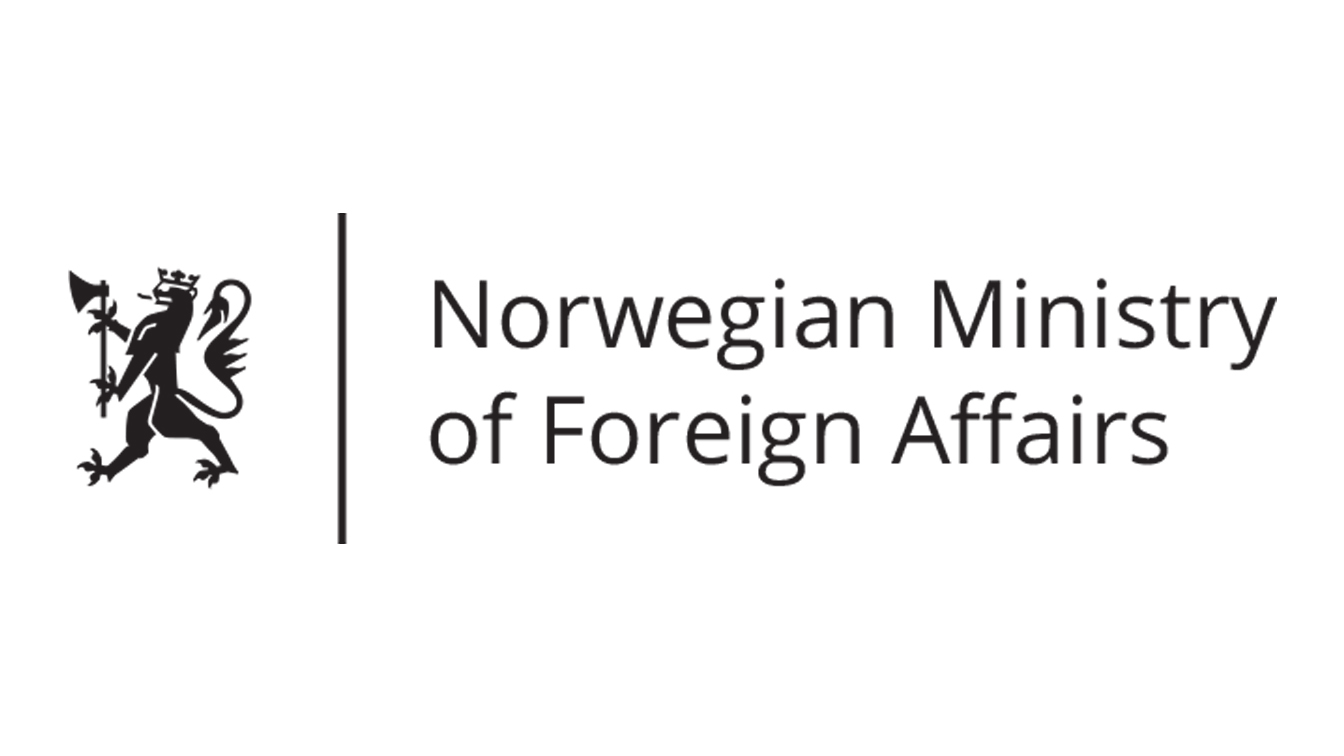The Evolution of Private Sector Action in Sustainable Development
Still Only One Earth: Lessons from 50 years of UN sustainable development policy
The history of private sector engagement in sustainable development policy and practice is rife with controversy, with countless examples of powerful industry groups and businesses selfishly lobbying against progressive regulation. But these are now outnumbered by genuine partners and transformers supporting sustainable development or driving systems change. (Download PDF) (See all policy briefs) (Subscribe to ENB)
2020 was a big year for corporate sustainability pledges. Heavy hitters, such as Microsoft, pledged to achieve carbon negative status by 2030, meaning it will remove more carbon dioxide from the atmosphere than it emits. Starbucks announced it would reduce its carbon emissions by 50% and that 50% of its water withdrawal for direct operations and coffee production would be conserved or replenished. Mastercard, along with a number of corporate partners, announced the Priceless Planet Coalition, which is pledging to plant 100 million trees over five years. And in September 2020, BlackRock, the world’s largest asset manager, set a goal of 15% carbon emissions reduction across all new investments where they control energy usage.
Such pledges are welcome, but many question their adequacy.
The private sector is widely considered the engine of economic growth. It has, among other things, contributed to technological advancements in key sectors, such as energy and transportation, increased life expectancy through innovation in health care, and helped over a billion people escape living in extreme poverty.
But this engine of growth has wreaked havoc on the ecological systems that support human life on this planet and has contributed to considerable social inequality. Studies have found 100 companies are responsible for 71% of industrial greenhouse gas emissions since 1988. And despite humanity having already cut down 46% of the trees on the planet, more than half of the most significant timber and pulp companies still refuse to commit to protecting biodiversity or achieving zero-deforestation in tropical forests they manage, which are collectively almost as large as England.
Knowledge of the role humans play in global ecological systems has grown considerably since the 1972 Stockholm Conference on the Human Environment. Yet, despite numerous sustainability pledges, many corporations continue to have negative impacts on people and the planet. Unsustainability remains the norm.
Since 1972, actors in the private sector, including corporations, investors, industry interest groups, and philanthropists have engaged in sustainability policy and practice in three main ways: actively blocking action on environmental and social issues; partnering with governments and other stakeholders to advance sustainable development; and working to transform the systems that have led to climate change and unsustainability, particularly growth-based economic models.
This brief explores these different roles and considers the work that remains for the private sector to meaningfully engage in sustainable development policy.
Profits over People and Planet
“Merchants of doubt” is the name given to the companies, key individuals, and interest groups involved in decades worth of disinformation about climate change and ozone depleting substances (Oreskes & Conway, 2011). For decades, powerful companies have lobbied against action on a wide range of environmental regulations—both nationally and internationally—in the name of economic profit. Take Monsanto, the agrochemical company (acquired by Bayer in 2018), which has lobbied against regulation of harmful herbicides and pesticides, specifically in the negotiations of the Cartagena Protocol on Biosafety and the Stockholm Convention on Persistent Organic Pollutants (Robin, 2014). Monsanto spent more than EUR 14 million in 2016-17 to avoid regulation of glyphosate, a controversial weedkiller. ExxonMobil, a multinational oil and gas company, whose own scientists warned managers more than 40 years ago of “potentially catastrophic events” as a result of climate change, engaged in climate disinformation campaigns and lobbied against climate action for decades.

Civil society organizations, social movements, and academics working for sustainable development have long been aware of the negative role played by corporations and industry interest groups and have worked to expose and/or limit their power. Governments and international institutions have worked to set up transparency rules and lobbying registries to show what corporations spend to influence decision-making, such as the EU’s transparency register and the Officer of the Commissioner of Lobbying in Canada.
For nearly three decades, many of the world's largest fossil fuel companies have knowingly worked to deceive the public about the realities and risks of climate change.
When their power and profits are threatened, corporations will act in self interest to ensure their survival. This action can take different forms, however. One way is to act as “merchants of doubt” and lobby governments against actions that threaten their profits. Another is to change positions and move with the times. A good example of the latter is DuPont, which was the largest producer of ozone depleting chlorofluorocarbons (CFCs). In 1988, DuPont announced a complete phase-out of CFC production, turning the tide on the negotiations that resulted in the Montreal Protocol on Substances that Deplete the Ozone Layer (Grey, 2018), widely lauded as one of the most successful environmental treaties. A key reason for this switch was to gain market share, as highlighted by the DuPont’s Freon Division Director Joseph Glass: “When you have USD 3 billion of CFCs sold worldwide and 70% of that is about to be regulated out of existence, there is tremendous market potential” (Gilding, 2012).
The Private Sector as Partners
As Unilever’s former Chief Executive Officer Paul Polman observed, many companies and private sector actors now see themselves as partners in achieving sustainable development and they engage in this pursuit in a myriad of ways. Some realize sustainable development is essential not just for the future of their business, but for the planet.

Companies with sustainability business models or corporate social responsibility portfolios, philanthropists, impact investors, and institutional investors now spend considerable effort to work with international institutions, governments, and civil society organizations to generate sustainable and green growth. The private sector forms a key part of implementing the Sustainable Development Goals (SDGs), particularly SDG 17 (partnerships), with the expectation they will contribute with capital investment in the face of dwindling public resources.
Sustainability makes good business sense, and we’re all on the same team at the end of the day. That’s the truth about the human condition.
It is estimated that achieving the SDGs will require between USD 5 trillion and USD 7 trillion per year, with current gaps in investment in developing countries at nearly USD 2.5 trillion per year. That may seems a staggering amount, but for perspective: The SDGs can be achieved by mobilizing 7.76% of global assets under management each year. This amount is less than the capital exchanged on a single day in the world’s financial markets.
Maurice Strong, Secretary-General of both the 1972 Stockholm Conference and the 1992 UN Conference on Environment and Development (Earth Summit), saw the business community as an increasingly influential political force for sustainable development. By 1992, major companies were taking the environment more seriously, not the least because of the potential of good environmental stewardship to influence consumer attitudes. Swiss industrialist Stephan Schmidheiny, Chairman of the Business Council for Sustainable Development, led the call for fundamental changes in business practices, recognizing that environmental sustainability would contribute to maximizing long-term profit (Engfeldt, 2009). In 1992, the Council comprised 48 chief executive officers and board chairman of national and multinational companies from all regions of the world.
In 1995, the Council merged with the World Industry Council for the Environment (WICE). This group had been created by the International Chamber of Commerce after the Earth Summit. The resulting World Business Council for Sustainable Development became a platform for business to respond to sustainability challenges that were just beginning to break the surface of collective business consciousness.
Today, there are a range of partnerships that can be used to achieve sustainable development, such as innovative financing for development, impact investment, public-private partnerships (P3s), and Environmental, Social, and Governance (ESG) risk considerations.
Impact investment is gaining traction with the focus on making investments that achieve social and environmental impacts alongside financial return. One such example is SDG impact, a United Nations Development Programme (UNDP) initiative that develops resources related to impact management, intelligence, and facilitation to accelerate investment towards the SDGs.
Research in India has shown impact investment can provide considerable growth. Fifty investors contributed USD 5.2 billion into projects in agriculture, clean energy, education, microfinance, and healthcare between 2010 and 2018, and investment is growing annually by 14%. However, impact investing has been criticized for being riddled with a range of problems. This includes confusion about whether investors should forgo some financial gain to achieve social benefits or pursue market returns. And there are questions surrounding theories of impact as a result of a lack of agreed indicators, standardization across sectors, and inability to attribute a change in an indicator to a specific investment or company.

A range of partnerships that mobilize private sector finance and expertise has evolved in the international sustainability space. For instance, the Land Degradation Neutrality Fund of the UN Convention to Combat Desertification (UNCCD), managed by the investment firm Mirova, blends resources from public, private, and philanthropic spaces for private sector sustainable land management and land restoration projects. The Global Environment Facility has engaged in blended finance since its inception in 1992 to reduce risks for private finance to engage in sustainable development through non-grant instruments such as debt, guarantees, and equity. Cumulatively the GEF has invested over USD 800 million in 98 blended finance projects that have mobilized co-financing of USD 8 billion. One such example is the GEF-International Finance Corporation Greener Shipping Investment Platform, which aims to accelerate private sector investment into greener shipping that improve efficiency, reduce operating costs, increase fuel savings and provide significant carbon savings through blended finance.
These examples operate within the confines of existing socio-economic systems and focus on reducing harm and negative impacts of private sector activities. Greening existing systems is important and valuable and reducing harm is essential, but the question is whether it is enough to truly tackle issues like climate change and social inequality.
Businesses as Transformers
The approach to sustainability thus far has been dominated by a focus on making things “less bad” by reducing the negative and social impacts of corporations (Robinson & Cole, 2015). This is done, for example, through reducing carbon emissions, decreasing deforestation, eliminating child labour, lowering social inequality, or limiting plastic pollution—all while continuing to make a profit and grow the economy. But given the dire situation we find ourselves in, is there a chance this approach just prolongs the inevitable decline of the natural and social systems that support human life on this planet?
It is simply not enough to focus only on minimizing harm in the belief we can grow our way out of this problem. This is also a narrative focused on sacrifice and scarcity that is downright uninspiring and has contributed to increased polarization as well as apathy (Robinson & Cole, 2015).
Instead, we need to transform the economic system towards one that is regenerative, equitable, and operates within planetary boundaries.
There are strong arguments that the way the economic system is designed and operates is inherently unsustainable due to the fact that economic growth is the unwritten goal regardless of its impact on nature and human well-being (Raworth, 2017). It is also widely believed an absolute decoupling of growth from greenhouse gas emissions can be achieved, as it is necessary to achieve the goals of the Paris Agreement and the SDGs. However, current trends show reaching such decoupling is years away from being achieved and potentially impossible (Raworth, 2017).
Given current ecological and social circumstances, merely eliminating further negative impacts is not enough. Eliminating overspending does not save us from debt anymore than lessening destruction to a battered house yields a decent place to live.
Most private sector actors play by the rules of this unsustainable system. It is hard not to. But it is a choice. A growing number of entrepreneurs are choosing not to play by the rules and are working instead to change them. In fact, some aim to transform the purpose of business and the economic system itself.
An umbrella term for the ventures that these entrepreneurs create are Sustainability-Oriented Hybrid Organizations (SOHOs) (Hestad et al., 2020b). These organizations, such as social enterprises, cooperatives, or benefit corporations, combine social, environmental, and commercial logics and aim to create regenerative equity. A key question that drives many of these organizations is: how can the activities of this venture maximize benefits to people and nature? Money is not the goal; it is the means to a greater end and growth is only desired if it contributes to the health of people and planet.
Achieving regenerative equity is the purpose for the creation of most of these ventures, and sustainability and equity is integrated into the entire value chain. One example is the Panamanian-American forestry company, Planting Empowerment, which works with farmers to reforest lands that have been degraded and generate sustainable household incomes. They operate in synchronicity with ecological and socio-economic systems (Muñoz & Cohen, 2017). Another is La Borda, a sustainable social housing cooperative in Barcelona, Spain, that works to increase access to decent, affordable, and environmentally sustainable housing, which promotes community and socio-ecological re-connection (Hestad et al., 2020a).
Over the past few decades, hundreds of thousands of new ventures have been created due to the lack of action by mainstream private sector actors and governments. Alongside them, certification schemes have emerged to set the rules by which these organizations should operate. A key example is Benefit Corporation Certification. The scheme evaluates the overall positive impact of a company, includes a minimum score to be verified as a “B Corp,” and encourages businesses to alter their legal documents to require the board to balance purpose and profit.
These entrepreneurs are also engaging with and being recognized in the international sustainability arena. First, they are gaining recognition through initiatives such as the United Nations Framework Convention on Climate Change Momentum for Change. This initiative shines a light on activities that are moving the world toward a highly resilient, low-carbon future. In 2020, it awarded the architecture company Landprocess the UN Global Action Award for implementing equitable nature-based solutions in Bangkok.
However, this does not mean all benefit corporations or SOHOs are working for regenerative equity. Nor does it mean every corporation in the world needs to do so. But it is clear that for humanity to achieve the SDGs and live within planetary boundaries, the economic system needs to shift away from profit at any cost, many corporations need to work for regenerative equity, and the remainder cannot knowingly or unknowingly continue to cause harm.
Recommendations for Future Engagement
There are a range of actions policymakers should consider when engaging with the private sector to achieve sustainable development.
First, diversity in the private sector is not the enemy. Diversity of opinion and conflict is key to redefining the problems we are facing, shifting perspectives, and designing strategic solutions that achieve results (Gillard et al., 2016). There will continue to be “bad actors” on different issues. Indeed, who is a bad actor depends entirely on your perspective. With respect to the sustainability agenda, there will continue to be agents that lobby to maintain the status quo and argue the trade-offs to profit are unacceptable. But conflict can be harnessed and lead to innovation while the shunning of individuals and corporations can lead to shadow spaces of disinformation and increased polarization. So, it is important to experiment with ways to constructively engage with those working against progressive action. But we cannot sit idly by. Acts of principled outrage are required when corporations are systematically and deliberately harming people’s lives and environmental life support systems. In those instances, policymakers need to take decisive action through changing laws or policy, or by other means.
Second, we cannot rely too heavily on the potential of impact investing and similar profit-driven approaches for achieving sustainability. It is important that private sector partners continue to innovate with new sustainability-oriented financing mechanisms and profit-driven ventures as there is room for sustainability gains by reducing environmental harm and greening the existing economic system in the short term. But it is also important to recognize the limitations of its potential given the immense challenges associated with achieving absolute decoupling of growth from greenhouse gas emissions and the likelihood this approach would perpetuate drivers of inequality and environmental degradation in the long run. Policymakers should look to the considerable research and practice on how to achieve sustainable and equitable transformations (O’Brien, 2018; EEA, 2018; Sharma, 2017). Such approaches can help with taking a whole systems and holistic approach to analyze whether profit-driven approaches are truly achieving sustainability or just delaying the decline of the natural and social systems that support human life on this planet.
Third, transformers such as SOHOs need support. They need enabling legal and policy environments that facilitate rather than hamper their emergence and success—such as legal mechanisms that allow companies to balance profit and purpose instead of being required to pursue returns for shareholders. These innovating entrepreneurs and ventures can be the gardeners that sow the seeds of a new economic system that has regenerative equity as its purpose and can contribute to a more sustainable world.
Works Consulted
EEA. (2018). Perspectives on transitions to sustainability. European Environment Agency.
Engfeldt, L. (2009). From Stockholm to Johannesburg and beyond. Swedish Ministry for Foreign Affairs.
Gilding, P. (2012). The great disruption: Why the climate crisis will bring on the end of shopping and the birth of a new world. Bloomsbury Press.
Gillard, R., Gouldson, A., Paavola, J., & Van Alstine, J. (2016). Transformational responses to climate change: Beyond a systems perspective of social change in mitigation and adaptation. Wiley Interdisciplinary Reviews: Climate Change, 7(2), 251–265. https://doi.org/10.1002/wcc.384
Grey, F. (2018). Corporate lobbying for environmental protection. Journal of Environmental Economics and Management, 90, 23–40. https://doi.org/10.1016/j.jeem.2018.03.008
Hestad, D., Tàbara, J. D., & Thornton, T. F. (2020a). Transcending unsustainable dichotomies in management: Lessons from Sustainability-Oriented Hybrid Organisations in Barcelona. Journal of Cleaner Production, 244, 118766.
Hestad, D., Tàbara, J. D., & Thornton, T. F. (2020b). The three logics of sustainability-oriented hybrid organisations: A multi-disciplinary review. Sustainability Science. https://doi.org/10.1007/s11625-020-00883-x
Maggs, D., & Robinson, J. (2016). Recalibrating the Anthropocene: Sustainability in an imaginary world. Environmental Philosophy, 13(2), 175–194. https://doi.org/10.5840/envirophil201611740
Mulvey, K., Shulman, S., Anderson, D., Cole, N., Piepenburg, J., & Sideris, J. (2015). The climate deception dossiers: Internal fossil fuel industry memos reveal decades of corporate disinformation [Report]. Union of Concerned Scientists. https://www.ucsusa.org/sites/default/files/attach/2015/07/The-Climate-Deception-Dossiers.pdf
Muñoz, P., & Cohen, B. (2017). Towards a social-ecological understanding of sustainable venturing. Journal of Business Venturing Insights, 7, 1–8.
O’Brien, K. (2018). Is the 1.5°C target possible? Exploring the three spheres of transformation. Current Opinion in Environmental Sustainability, 31, 153–160. https://doi.org/10.1016/j.cosust.2018.04.010
Oreskes, N., & Conway, E. M. (2011). Merchants of doubt: How a handful of scientists obscured the truth on issues from tobacco smoke to global warming (Reprint edition). Bloomsbury Press.
Raworth, K. (2017). Doughnut economics: Seven ways to think like a 21st-century economist. Chelsea Green Publishing.
Robin, M.M. (2014). The world according to Monsanto: Pollution, corruption, and the control of our food supply. The New Press.
Robinson, J., & Cole, R. J. (2015). Theoretical underpinnings of regenerative sustainability. Building Research & Information, 43(2), 133–143. https://doi.org/10.1080/09613218.2014.979082
Sharma, M. (2017). Radical transformational leadership: Strategic action for change agents. North Atlantic Books.
You might also be interested in
Rethinking Investment Treaties
International investment treaties and their investor–state dispute settlement (ISDS) system are facing growing scrutiny. But what would an alternative system—one fit for the challenges of the 21st century—look like?
IGF Mining Policy Framework
A compendium of best practices for governments to manage the full range of issues in the mining sector.
Web of resilience
Pakistan's development model has still not recognised the limits of the natural environment and the damage it would cause, if violated, to the sustainability of development and to the health and well-being of its population. Pakistan’s environment journey began with Stockholm Declaration in 1972. A delegation led by Nusrat Bhutto represented the country at the Stockholm meeting, resulting in the establishment of the Urban Affairs Division (UAD), the precursor of today’s Ministry of Climate Change. In setting the country’s environmental agenda, we were inspired by the Stockholm Principles, but in reality, we have mostly ignored them for the last five decades.
IGF Case Study: Leveraging Technologies for Gender Equality in Mining Communities
How can sharing technological infrastructure support gender equality and serve the broad betterment of mining communities?



